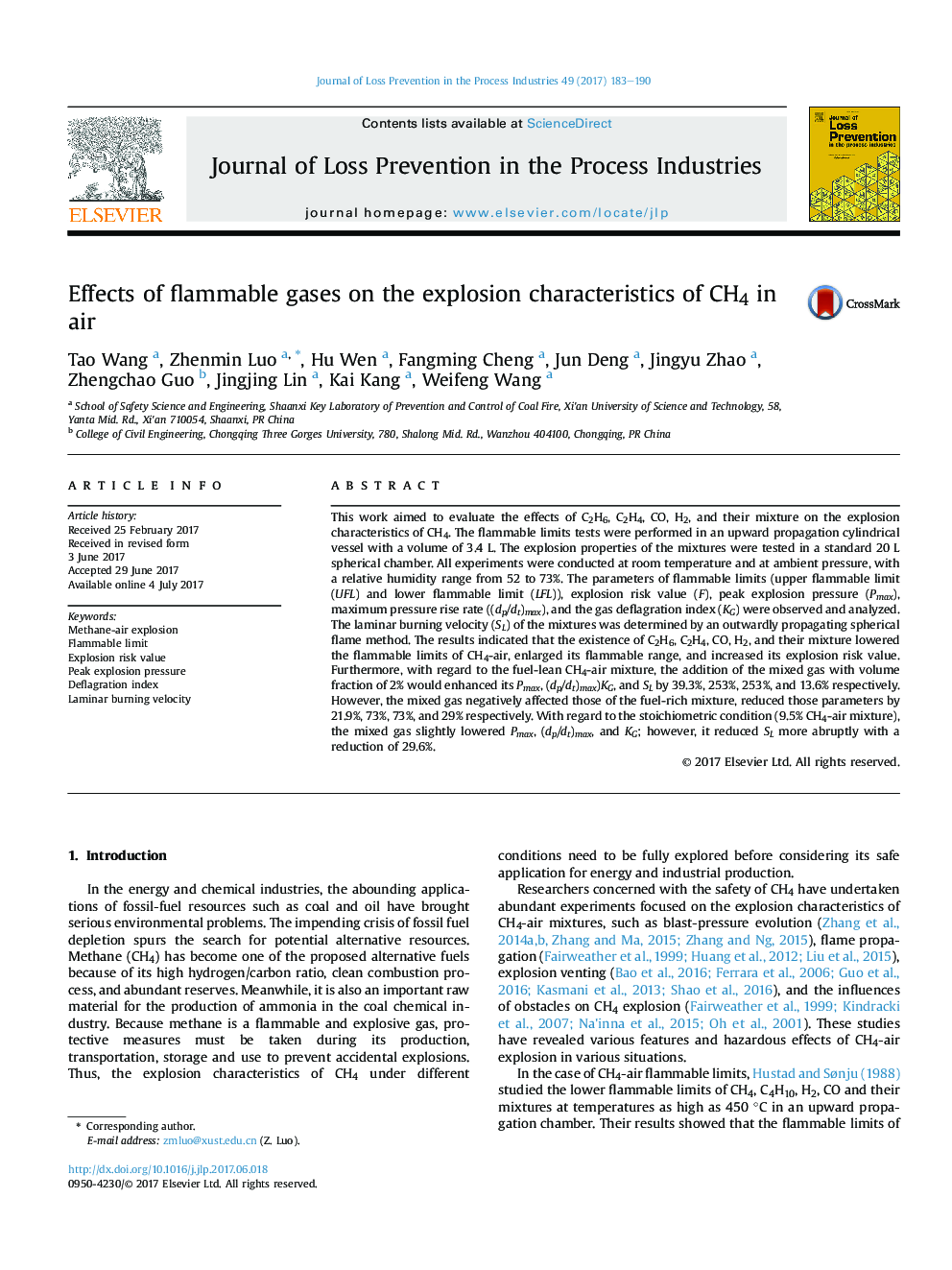| Article ID | Journal | Published Year | Pages | File Type |
|---|---|---|---|---|
| 4980331 | Journal of Loss Prevention in the Process Industries | 2017 | 8 Pages |
Abstract
This work aimed to evaluate the effects of C2H6, C2H4, CO, H2, and their mixture on the explosion characteristics of CH4. The flammable limits tests were performed in an upward propagation cylindrical vessel with a volume of 3.4Â L. The explosion properties of the mixtures were tested in a standard 20Â L spherical chamber. All experiments were conducted at room temperature and at ambient pressure, with a relative humidity range from 52 to 73%. The parameters of flammable limits (upper flammable limit (UFL) and lower flammable limit (LFL)), explosion risk value (F), peak explosion pressure (Pmax), maximum pressure rise rate ((dp/dt)max), and the gas deflagration index (KG) were observed and analyzed. The laminar burning velocity (SL) of the mixtures was determined by an outwardly propagating spherical flame method. The results indicated that the existence of C2H6, C2H4, CO, H2, and their mixture lowered the flammable limits of CH4-air, enlarged its flammable range, and increased its explosion risk value. Furthermore, with regard to the fuel-lean CH4-air mixture, the addition of the mixed gas with volume fraction of 2% would enhanced its Pmax, (dp/dt)max)KG, and SL by 39.3%, 253%, 253%, and 13.6% respectively. However, the mixed gas negatively affected those of the fuel-rich mixture, reduced those parameters by 21.9%, 73%, 73%, and 29% respectively. With regard to the stoichiometric condition (9.5% CH4-air mixture), the mixed gas slightly lowered Pmax, (dp/dt)max, and KG; however, it reduced SL more abruptly with a reduction of 29.6%.
Related Topics
Physical Sciences and Engineering
Chemical Engineering
Chemical Health and Safety
Authors
Tao Wang, Zhenmin Luo, Hu Wen, Fangming Cheng, Jun Deng, Jingyu Zhao, Zhengchao Guo, Jingjing Lin, Kai Kang, Weifeng Wang,
